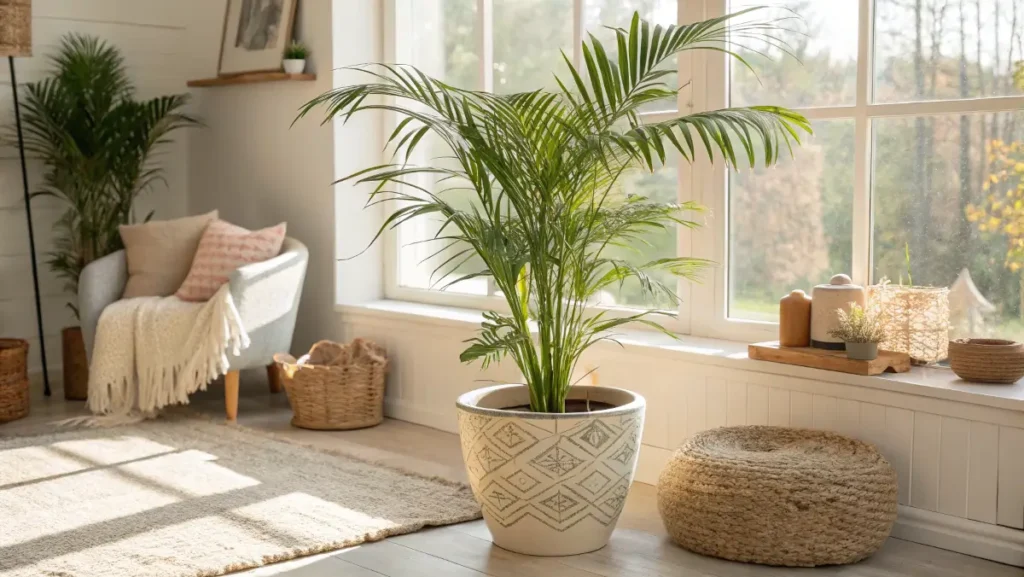
Nowadays, potted palm trees add a warm, vacation-like vibe to any living space, and they’re perfect for those who want a low-maintenance indoor plant. This friendly guide covers everything from selecting the right variety and pot to mastering a simple watering routine. Along the way, you’ll find practical tips, personal stories, and answers to common questions. By the end, you’ll be ready to welcome these tropical wonders into your home.
Table of Contents
Introduction to potted palm trees
What Are potted palm trees?
I like to think of potted palm trees as little tropical buddies that bring a dash of sunshine indoors. They’re basically palm plants grown in containers, allowing us to enjoy their lush fronds and easygoing nature inside.
- Usually low-maintenance if given proper palm plant care
- Great for people new to houseplants or experienced growers
- Ideal for introducing a relaxed, carefree touch to your home.
When I got into potted palm trees, I realized these green friends aren’t just about looks—they’re resilient, too. If you’re curious about plants that can adapt well, potted palm trees might be your top choice.
Why Choose potted palm trees?
So, why give them a go?
- You can move them around easily if lighting changes
- They fit just about any interior style—from chill boho to sleek minimal
- They bring a natural jungle feeling indoors
I love how my potted palm trees instantly bring a breezy, laid-back vibe to my living room, especially when the sun streams in. If you ever want to try outdoor palm plants, starting with a palm tree in pot form is a great stepping stone. These flexible palms let you experiment without fully committing to planting them outside.
Choosing the Right Species for Indoor Palm Varieties
Popular potted palm tree Varieties
I’ve tried a few potted palm trees in my time. My top picks include:
- Areca Palm: Bright, feather-like fronds, likes indirect light
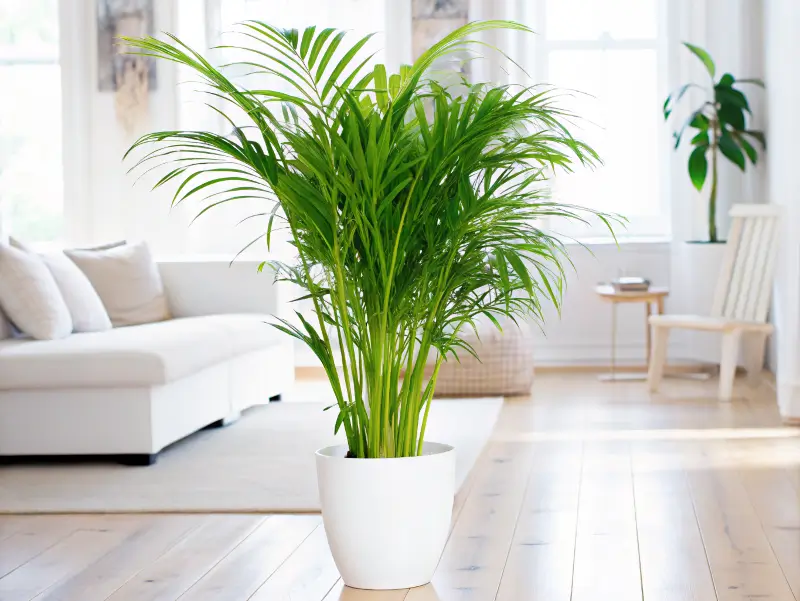
- Kentia Palm: Handles lower light, has a timeless silhouette
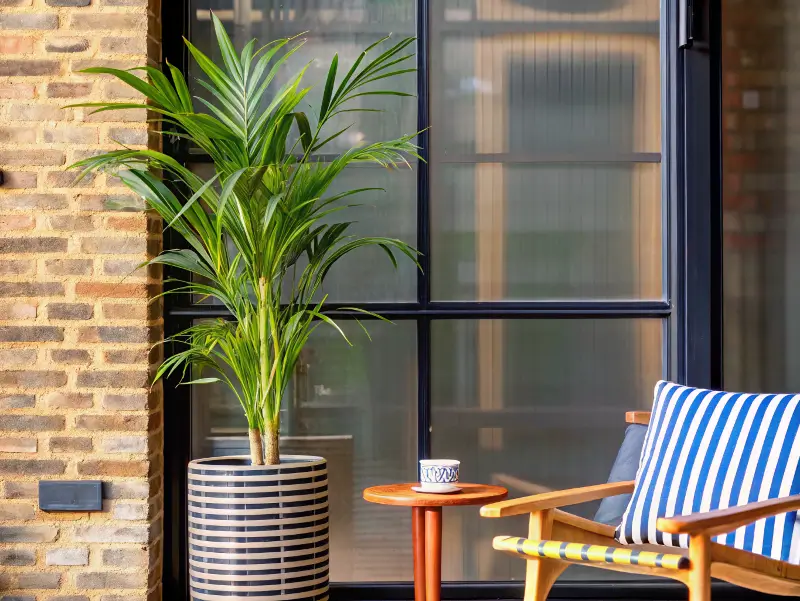
- Parlor Palm: Great for tight spaces, super forgiving
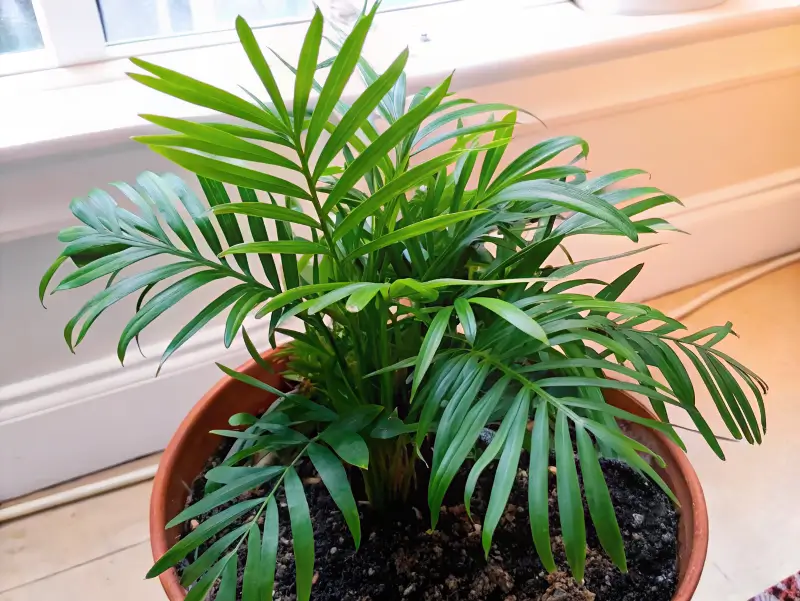
- Ponytail Palm: Eye-catching trunk that looks like a ponytail
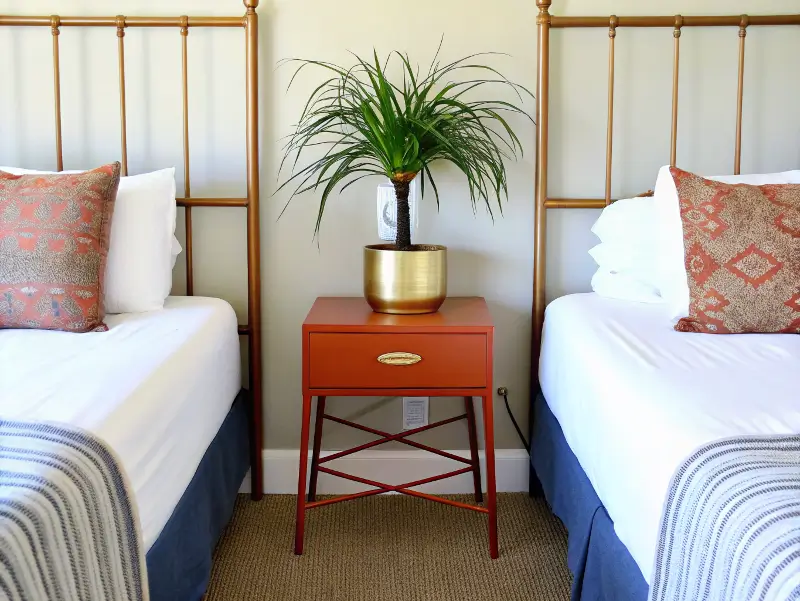
For crave-worthy smaller palms, check out Small Palm Trees for compact cuties that can brighten corners or patios.
Key Factors to Consider Before Buying
Not sure which potted palm tree to pick? Think about:
- Light: Some palms enjoy bright, indirect light, while others endure moderate light.
- Size: Measure your space so it won’t crowd the ceiling.
- Maintenance: If you’re frequently out and about, choose a palm that tolerates occasional missed watering.
Palm trees in pots are super helpful in unpredictable indoor climates. You can easily move them to a spot with consistent temperature or light. In my home, I shuffle potted palm trees around when seasons change—finding that sweet lighting zone that keeps them green and happy.Also, it’s okay if you’re not an expert on palm tree care. Most indoor palms adapt well with just a little consistency and a dash of attention. When in doubt, stick with an easy-care variety for the best chance of success.
Ideal Growing Conditions for Tropical Container Palms
Understanding Light Requirements
Let’s face it: good light makes a world of difference for potted palm trees. Still, many palms aren’t huge fans of blazing direct sun. Aim for bright but indirect light:
- Too much direct sun can scorch fronds
- Too little light often leads to thin, leggy growth
- Medium to bright, indirect light keeps them balanced
Try positioning your potted palm a few feet away from a brightly lit window. If you notice any yellowing or brown leaves, shift it slightly. Even minor adjustments in placement can make a big difference.
Regulating Temperature & Humidity
One chilly winter, I made the mistake of putting a potted palm tree near a drafty window—ouch. Most palms thrive in comfortable indoor temps of 65°F to 80°F, with a bit of humidity on the side.
- Mist the leaves or use a humidifier in drier homes
- Avoid big temperature swings if possible
- Keep your palm away from vents or direct cold air
Sometimes, I move my potted palm trees outside for fresh air in summer. Just do it gradually. If you’re hoping to transition to outdoor palm plants, place the pot in partial shade first. Watch the fronds closely for signs of sunburn or stress. A gentle transition helps them handle more light without frying those beautiful leaves.
Selecting the Best Pot & Soil for potted palm trees
Types of Containers for palm tree with pot Growth
Choosing the right container for potted palm trees is a game-changer. Consider:
- Terra-cotta pots: Good airflow, but soil may dry faster
- Plastic pots: Retains moisture for longer intervals
- Ceramic pots: Stylish and sturdy, yet heavier to move
No matter the style, ensure there are drainage holes. My first palm rotted in a gorgeous pot without proper drainage—lesson learned!I also find that potted palm trees make it easier to experiment with different pot styles and colors. You can swap them around whenever you feel like refreshing your décor, which I do more often than I care to admit.
Soil Mixes & Drainage Essentials
A fast-draining potting mix is non-negotiable for potted palm trees. I like to combine:
- 2 parts indoor potting mix
- 1 part perlite or coarse sand
- Optional: A little peat moss or coconut coir
This setup prevents soggy roots and lets excess water flow away. Don’t press the soil too tight—your palm roots need space to breathe. A light, airy environment keeps root rot at bay.
- Water promptly drains, reducing risk of fungus
- Oxygen can reach the roots, promoting sturdier growth
If you keep the roots happy, potted palm trees reward you with lush fronds up top.
Watering & Fertilizing potted palm trees
Crafting a Consistent Watering Routine
I used to drown my plants out of sheer enthusiasm. With potted palm trees, it’s wise to water moderately:
- Gently insert your finger about an inch below the surface to check how damp the soil is.
- If the soil is dry, water thoroughly until you see runoff
- In cooler seasons, cut back on watering a bit
Too much water can leave the soil drenched and turn the fronds dull or yellow, while not watering enough leads to brown, brittle leaf tips. You may need to experiment a bit to strike the perfect balance, so rely on your intuition and watch for any cues your plant might give.
Choosing the Right Fertilizers & Nutrients
Feeding potted palm trees is pretty straightforward. I favor a slow-release palm fertilizer:
- Apply in spring and summer when the plant actively grows
- Reduce or skip fertilizing in colder months
- Watch for salt buildup in soil
If you like organic methods, sprinkling used coffee grounds occasionally can enhance soil acidity, but don’t go overboard. Once or twice a month is usually enough. If you see a white crust on top of the soil, it’s time to flush with water to remove salts. That’s a surefire way to keep your palm tree care regimen simple and your palm looking fresh.
Pruning & Maintenance Tips for Healthy Palms
Trimming Fronds & Managing Growth
I know—brown fronds can be an eyesore on your potted palm trees. Quick tips for pruning:
- Snip off only the browned section to avoid hitting healthy tissue
- Use clean tools to prevent infections
- Wear gloves if your palm has stiff or spiny leaves
Throw away trimmed fronds right away to keep your space tidy. Regularly removing dead leaves also discourages pests from hiding in the debris.
Seasonal Care for Indoor Palm Trees
Colder months can be tricky for potted palm trees. Move them away from chilly windows and be mindful of heating vents that dry the air. In warm summer weather, if your place gets really hot, shift your palm to a cooler corner or use sheer curtains to filter intense sunlight. If you’re into zoning info, the U.S. Department of Agriculture plant hardiness guidelines can give you an idea on temperature ranges, even if they’re mostly aimed at outdoor palm plants.Try a quick monthly checkup:
- Ensure the pot drains well
- Inspect for any bugs
- Rotate the palm for even light exposure
That’s all it takes to help your potted palm trees thrive. Consistency, mindfulness, and a little love go a long way in keeping those palms looking top-notch.
Dealing with Common Pests & Diseases in Potted Palms
Identifying Common potted palm tree Pests
One time, I welcomed spider mites onto my potted palm trees when I brought home a new plant. Watch out for:
- Tiny webs on leaf undersides
- Mealybugs that look like cotton
- Scale insects leaving sticky sap
Catching these buggers early stops bigger infestations.
Quick Remedies & Preventive Measures
If you suspect pests, remove your potted palm tree from other houseplants. Then try:
- Wiping leaves with soapy water or insecticidal soap
- Using neem oil as a natural deterrent
- Showering the fronds gently to knock off pests
Keeping moderate humidity and trimming dead material also slows pest spread. Regular checkups help you spot issues right away. Trust me, a little vigilance keeps your potted palm trees free from these annoying critters.
Styling & Placement for Indoor Palm Décor
Using potted palm trees for Home Aesthetics
I love mixing potted palm trees with other tropical houseplants for a lush, jungle-like corner. If you’re a fan of shifting furniture around, palms are a breeze to move, making room makeovers simple. Try:
- Positioning a taller palm behind stylish chairs
- Grouping smaller palms with ferns for variety
- Creating a casual beach-house vibe with coastal décor
The truth is, potted palm trees lend themselves to nearly any décor theme you fancy, whether that’s vintage shabby-chic or sleek contemporary.
Balancing Light and Furniture Layout
For best results, give your potted palm trees a little breathing room from walls. This promotes airflow and prevents leaf rubbing. If the fronds start drooping or yellowing, shift the pot to a less drafty spot or a slightly brighter area. Experiment until you see that sweet spot.
Even a solo palm tree in pot can transform a neglected corner into a serene hideaway. I like moving mine around every few months just for the change of scenery—keeps things fun and fresh.
Frequently Asked Questions about potted palm trees
Do palm trees grow well in pots?
Yes! Palm trees in pots can thrive if given plenty of indirect light, proper soil, and basic palm tree care. Many species adapt beautifully to containers.
How do you keep a potted palm tree alive in the winter?
Keep it warm and away from drafts, give moderate humidity, and water less often than in summer. Avoid letting the soil get too soggy.
Can I put my potted palm outside?
Absolutely. Just acclimate your potted palm tree slowly to sunlight. Partial shade is usually the best place to start for outdoor palm plants.
What does Epsom salt do for palm trees?
It provides magnesium, helping leaves stay green. Use sparingly to prevent salt buildup.
Troubleshooting & Advanced Care for Container-Grown Palms
Dealing with Slow Growth or Yellowing Fronds
If your potted palm trees look sluggish, double-check your watering routine. Overwatering often leads to yellow fronds, while underwatering causes brown tips. Also, ensure they’re getting enough light. If you placed them in a dim spot, a window seat might be a better choice. A gentle fertilizer during spring and summer also perks them up.
Advanced Tips for Long-Term Palm Health
Repot every two or three years to avoid overcrowded roots. That fresh soil promotes healthy growth for palm trees in pots. Watch out for salt buildup from fertilizers—white crust on top of the soil suggests it’s time to flush with water. Testing soil pH can also help, as a mildly acidic environment suits many indoor palms.
Overall, potted palm trees are quite forgiving if you keep an eye on their basic needs. With a bit of humor, love, and easygoing care, they’ll grace your home with a breezy tropical flair for years to come.

1 thought on “Potted Palm Trees: Care Tips for a Tropical Home Oasis Now”
Comments are closed.